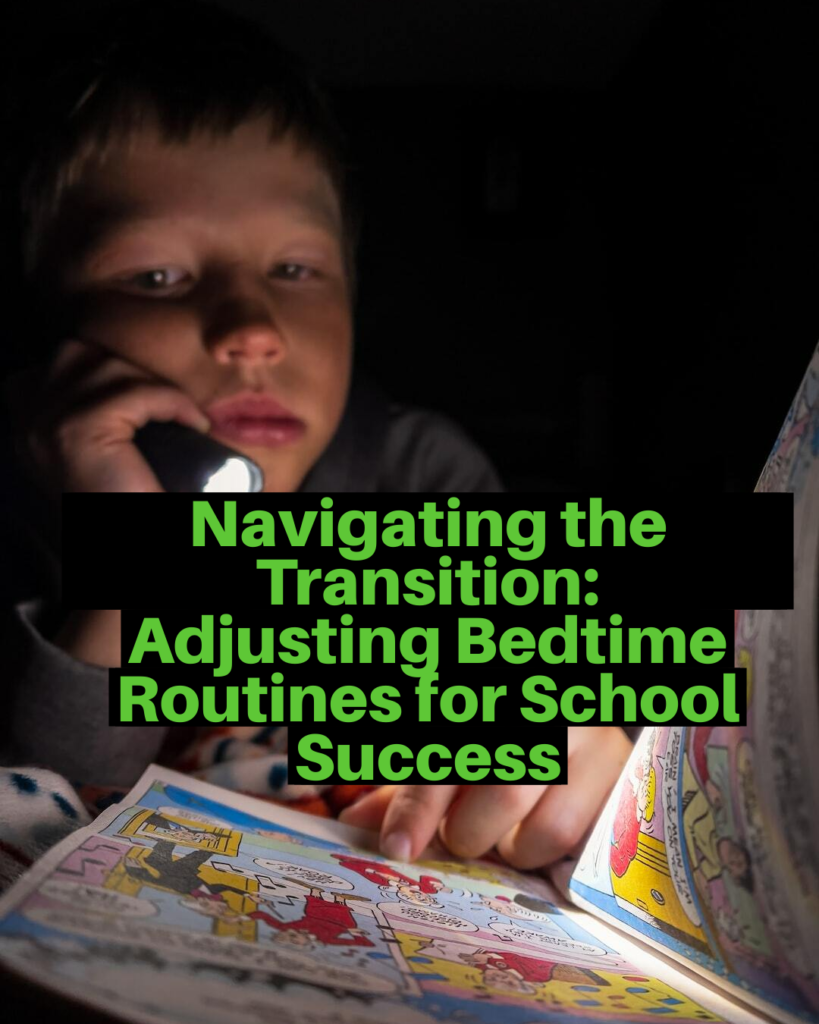
by bitsofthewilliams | Sep 5, 2023 | BACK TO SCHOOL EDITION, KIDS CORNER, REVIEWS
Back-to-school season is a time filled with butterflies in the stomach, new beginnings, and the promise of fresh experiences. In this delightful blog post, we’ll follow the heartwarming journeys of two special kiddos. Our Generation Doll Lin and Sophia, an enthusiastic five-year-old embarking on her adventure in kindergarten. These parallel stories celebrate the joy of learning and the magic of back-to-school moments.
Lin’s Back-to-School Preparations
As the sun rises on a crisp autumn morning, Lin is bursting with enthusiasm. She’s been counting down the days until she could go back to school and reunite with her friends. Just like any student, Lin knows the importance of being well-prepared. She carefully selects her outfit for the day, choosing a pretty floral dress and matching hair bow that reflects her vibrant personality.

Lin is ready to fill her lunch box with wholesome goodies to keep her energy up and her spirits high throughout the day. She believes that a nutritious lunch is not just fuel for the body but also a source of joy and comfort. As she prepares her lunch box for the day, she meticulously selects her favorite foods:
- Heart-Shaped Sandwich: Lin loves heart-shaped sandwiches made with creamy peanut butter and raspberry jam. She uses a cookie cutter to create these delightful little treats.
- Carrot Sticks and Hummus: For a healthy and crunchy side, Lin packs a small container of carrot sticks paired with a dollop of creamy hummus.
- Fresh Fruit Medley: Lin includes a colorful medley of fresh fruits like grapes, strawberries, and apple slices. She knows that a burst of natural sweetness will make her day even better.
- Yogurt with Sprinkles: Lin’s mom has added a special touch by topping her yogurt with rainbow sprinkles. It’s a small gesture that brings a big smile to Lin’s face.
- A Special Note: Lin’s mom slips a handwritten note into the lunch box, reminding her to be kind, confident, and to have a fantastic day at school.

Sophia’s First Day of Kindergarten
Meanwhile, Sophia, a bubbly five-year-old, is getting ready for her very first day of kindergarten. She’s filled with a mixture of excitement and nervousness. Her backpack is almost as big as she is, and she’s proud to carry it herself.
Sophia’s mom helps her pick out a cute dress and style her hair. The adorable butterfly clip that matches her dress perfectly is her favorite accessory for the day. With her new school supplies neatly packed and her lunch box by her side, Sophia is ready to embark on her kindergarten adventure.

Lin and Sophia may be in different worlds, but they have something in common: the joy of going to school with a lovingly packed lunch box. Lin’s adventure reminds us of the importance of nurturing both our bodies and our minds, while Sophia’s journey symbolizes the beginning of a lifelong love for learning.
As Lin heads to school, she carries the thought of little Sophia with her, knowing that many kids like her are starting their educational journeys today. And as Sophia takes her first steps into kindergarten, she knows that she has a world of experiences, knowledge, and friendships ahead of her.

The start of the school year is a remarkable time when young and old alike embark on new journeys of growth and discovery. Our Generation Doll Lin and little Sophia, each in their own way, demonstrate the importance of preparation, nurturing, and love as they go back to school with their lunch boxes. So, whether you’re sending off a doll or a real-life kindergartener, remember that every lunch packed with care is a symbol of love and support on their exciting journey of learning and growth.
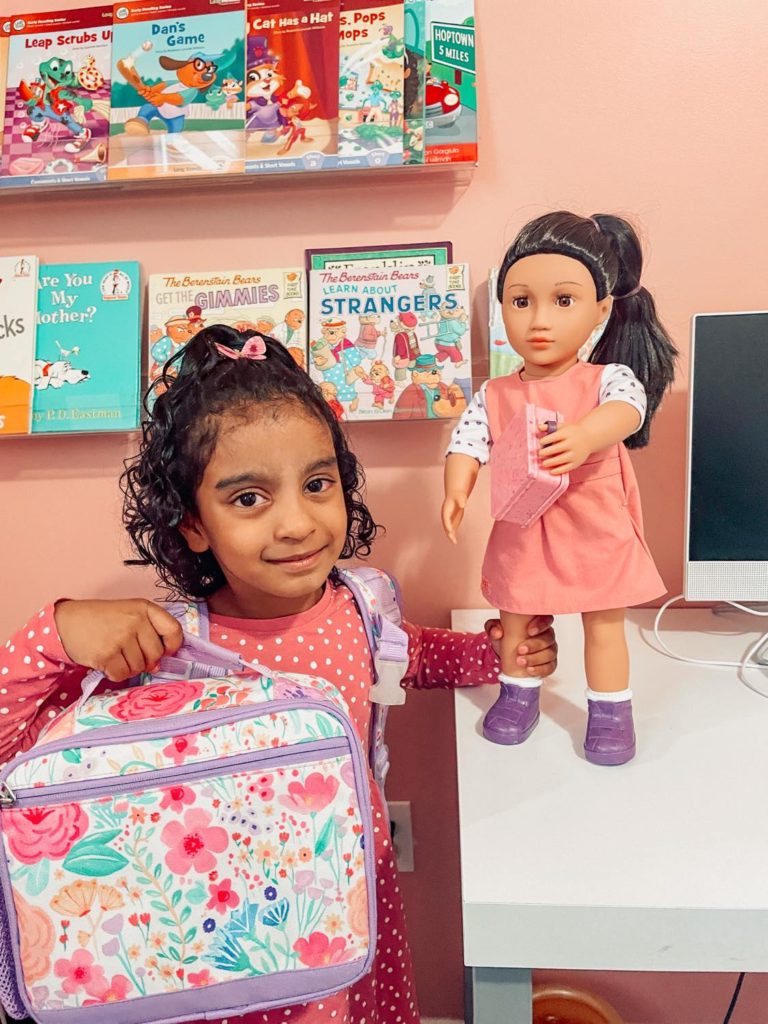
Have a happy and adventurous first day back to school!
xoxo

by bitsofthewilliams | Aug 5, 2023 | BACK TO SCHOOL EDITION, PARENTING
With the back-to-school season just around the corner, it’s time to stock up on delicious and nut-free snacks that will keep your kids energized and focused throughout the school day. Many schools have peanut-free policies to ensure the safety of all students, making it important to find alternative snacks that are equally tasty and nutritious. In this blog post, we’ll explore a variety of popular back-to-school snacks that are free of peanut butter and perfect for peanut-free classrooms.
-
Sunflower Seed Butter and Banana Roll-Ups: Swap out peanut butter for sunflower seed butter, a nut-free alternative that’s rich in protein and healthy fats. Spread sunflower seed butter on a whole wheat tortilla, add banana slices, and roll it up for a delicious and satisfying snack.
-
Hummus and Veggie Cups: Pack small containers with hummus and a variety of veggie sticks, such as carrot, celery, and cucumber. These crunchy and colorful bites offer a dose of vitamins and fiber, and kids will love dipping them in creamy hummus.
-
Cheese and Whole Grain Crackers: Create a snack pack with slices of cheese and whole grain crackers. This classic combo is a great source of protein and calcium, supporting your child’s growth and bone health.
-
Yogurt with Berries and Granola: Opt for yogurt cups or pouches that are free of nuts and packed with probiotics. Top with fresh berries and a sprinkle of nut-free granola for a wholesome and satisfying snack.
-
Popcorn with Herbs: Air-popped popcorn is a fantastic whole grain snack. Season it with herbs like rosemary, thyme, or nutritional yeast for a flavorful twist that kids will enjoy.
-
Trail Mix with Seeds: Create a trail mix using a mix of seeds like pumpkin seeds, sunflower seeds, and chia seeds, along with dried fruits and a touch of dark chocolate. This nutrient-rich snack is perfect for a quick energy boost.
-
Rice Cakes with Almond Butter: For schools that allow tree nuts but not peanuts, almond butter is a great alternative. Spread almond butter on rice cakes and add a drizzle of honey for a tasty and filling treat.
-
Fruit Salad Cups: Prepare fruit salad cups with a mix of colorful fruits such as grapes, berries, melon, and kiwi. Pack them in small containers for a refreshing and vitamin-packed snack.
-
Pretzel Sticks with Hummus: Pretzel sticks are a crunchy and fun snack that pairs perfectly with hummus. Choose whole grain pretzels for added fiber and dip them in hummus for a delightful flavor combination.
-
Apple Slices with Seed Butter: Another nut-free alternative is seed butter, such as pumpkin seed or sesame seed butter. Spread it on apple slices for a sweet and savory snack that’s rich in nutrients.
Navigating peanut-free classrooms doesn’t mean compromising on taste or nutrition. These nut-free back-to-school snack ideas offer a variety of options that are not only delicious but also safe for all students. By incorporating these peanut-free alternatives into your child’s daily routine, you can ensure they have the energy and sustenance they need to thrive during their school day. Remember to always check school guidelines and be mindful of other potential allergens to create a safe and enjoyable snacking experience for everyone.

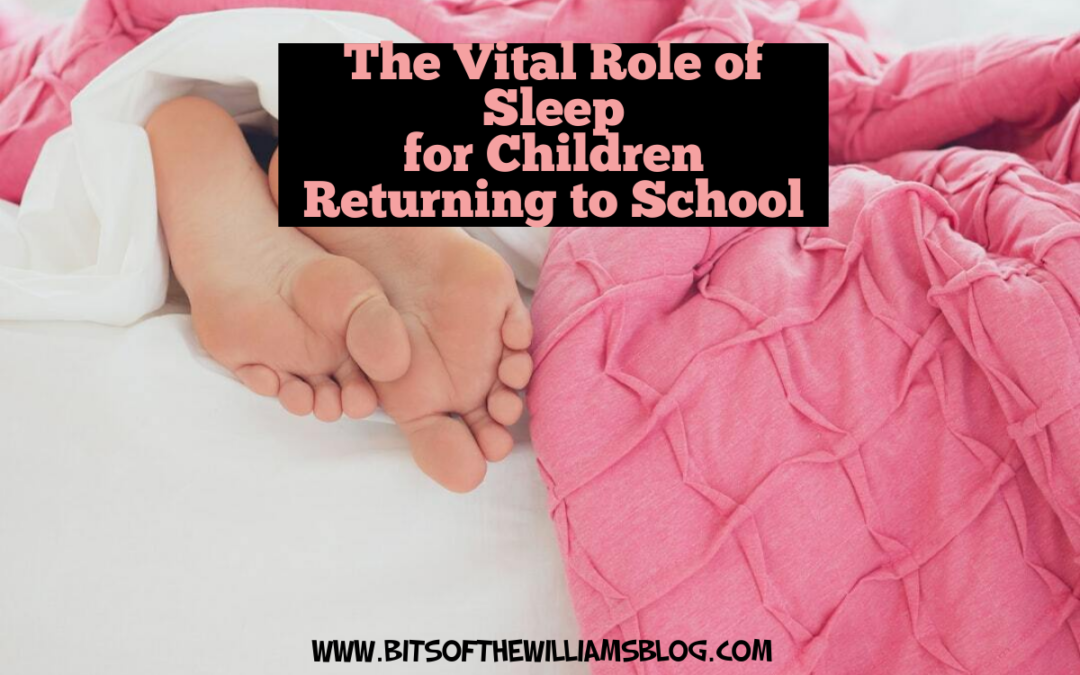
by bitsofthewilliams | Jul 24, 2023 | BACK TO SCHOOL EDITION, PARENTING
As the school bells chime once again, signaling the start of a new academic year, parents and educators eagerly prepare their young learners for the challenges that lie ahead. Amidst the hustle and bustle of purchasing school supplies and adjusting to new routines, one crucial aspect often gets overlooked: sleep. Adequate sleep is a fundamental pillar of a child’s physical and mental development, and it plays an indispensable role in their success as they return to school. In this blog post, we will delve into the significance of sleep for children and explore how it can positively impact their academic performance and overall well-being.
-
Cognitive Function and Memory
Sleep is essential for enhancing cognitive function and memory consolidation in children. During sleep, the brain processes and stores information learned during the day, solidifying it into long-term memory. Without sufficient sleep, children may find it challenging to retain and recall crucial information, leading to decreased academic performance. A well-rested mind is more alert, focused, and receptive, enabling students to grasp new concepts more effectively and perform better in exams.
-
Mood Regulation
Have you noticed how cranky and irritable a sleep-deprived child can be? Sleep plays a vital role in regulating emotions and mood in children. Sufficient rest allows them to better cope with stress and emotional challenges, fostering a more positive and amiable attitude towards their peers and teachers. This emotional stability promotes a healthy social environment, making it easier for children to build meaningful connections and collaborate with others, both inside and outside the classroom.
-
Physical Health and Immune System
An often-overlooked aspect of sleep is its impact on physical health. Adequate sleep strengthens a child’s immune system, reducing the risk of falling prey to common illnesses like colds and flu. Regular sleep patterns also contribute to maintaining a healthy weight and metabolism, mitigating the risk of obesity and related health issues. A well-rested body is more resilient, enabling kids to stay active and participate in physical activities with enthusiasm, which, in turn, further bolsters their overall health.
-
Attention and Concentration
In the classroom setting, the ability to concentrate and sustain attention is crucial for effective learning. Sleep deprivation can lead to increased distractibility and a shorter attention span, making it difficult for children to engage fully in lessons. By prioritizing sleep, parents and educators can help students remain alert, attentive, and actively participate in class discussions, resulting in a more productive and enriching learning experience.
-
Behavioral Regulation
Sleep has a significant impact on a child’s behavioral regulation. Fatigue and sleepiness can lead to impulsive behavior, reduced self-control, and heightened irritability. In contrast, well-rested children are more likely to exhibit positive behavior, improved decision-making skills, and a greater capacity to handle conflicts constructively. This not only contributes to a peaceful classroom environment but also aids in the development of vital social and emotional skills.
-
Stress Reduction
The transition from vacation mode to the demands of school can sometimes be stressful for children. Sleep serves as a natural stress reducer, allowing kids to recharge and face challenges with a refreshed mindset. Sufficient sleep can help alleviate anxiety and improve a child’s ability to cope with academic pressures, extracurricular activities, and the daily demands of school life.
As we bid adieu to the summer break and embrace the excitement of a new school year, let us not underestimate the transformative power of sleep on children’s lives. Prioritizing adequate sleep for our young learners can significantly impact their academic performance, emotional well-being, and physical health. By cultivating healthy sleep habits from an early age, parents and educators set the stage for a successful and fulfilling educational journey for every child, ensuring they have the energy, focus, and enthusiasm to thrive in school and beyond.
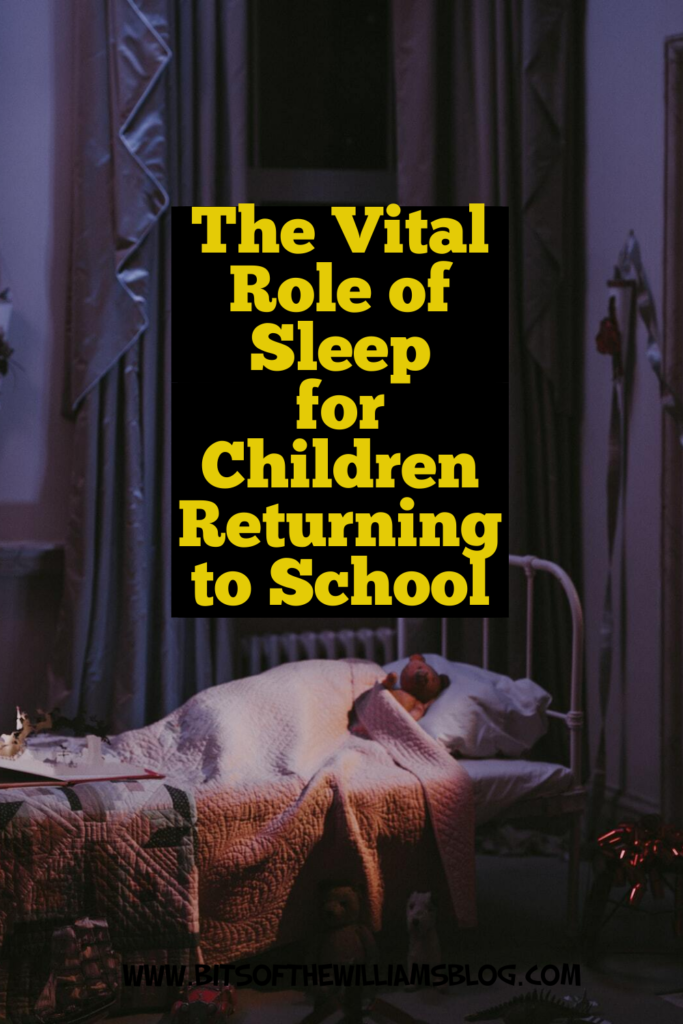
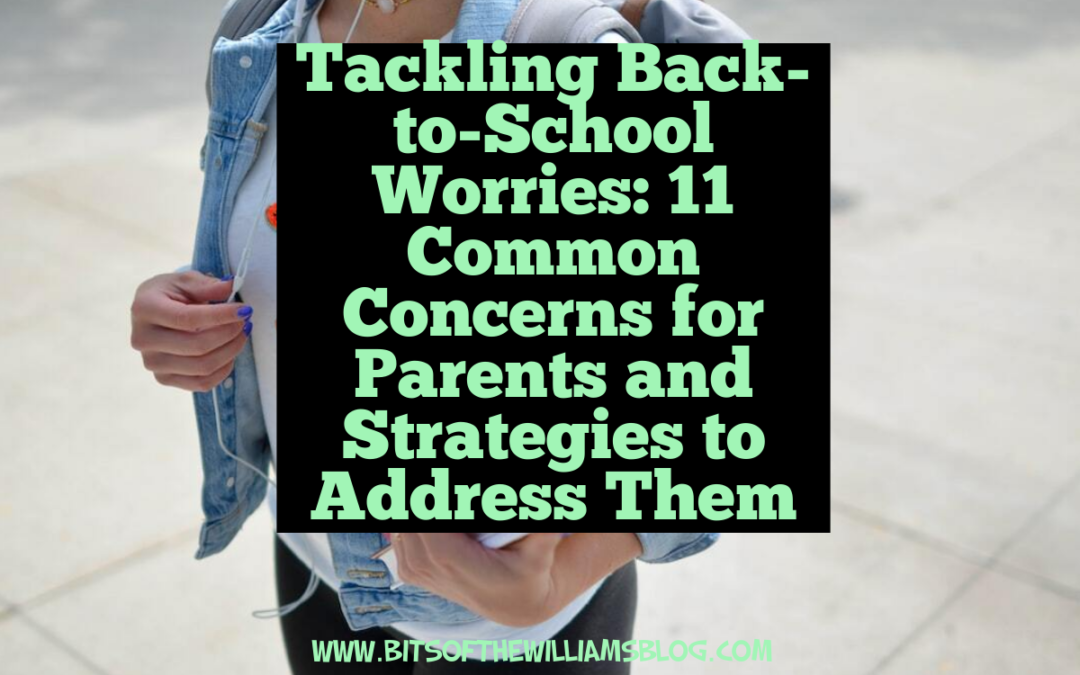
by bitsofthewilliams | Jul 22, 2023 | BACK TO SCHOOL EDITION, PARENTING
As the start of the school year approaches, it’s natural for parents to have concerns and worries. From academic performance to social interactions, there are various aspects of their child’s schooling that can cause apprehension. However, by proactively addressing these concerns, parents can set a positive foundation for their child’s educational journey. In this blog post, we will explore 11 common worries parents might have about the start of school and provide strategies to tackle them effectively.
-
Academic Performance:
Concerns about a child’s academic performance are common. To address this worry, establish open lines of communication with teachers, attend parent-teacher conferences, and engage in regular discussions about your child’s progress. Encourage a positive attitude towards learning and offer support at home, such as creating a study routine and providing a quiet space for homework.
-
Bullying and Peer Pressure:
Worries about bullying and peer pressure can be unsettling. Foster open dialogue with your child about these topics, emphasizing the importance of assertiveness and empathy. Teach them to recognize signs of bullying, and encourage them to seek help from teachers or school counselors. Encourage your child to cultivate diverse friendships and engage in activities that build self-confidence and resilience.
-
Social Integration:
Starting a new school year can be intimidating for children, especially if they are transitioning to a different school or grade. Help your child build social skills by arranging playdates with classmates before the school year begins. Encourage involvement in extracurricular activities or clubs to facilitate connections with peers who share common interests.
-
Time Management and Organization:
The demands of schoolwork and extracurricular activities can cause concerns about time management and organization. Teach your child effective planning and organization skills, such as using a planner or digital calendar, breaking tasks into manageable steps, and prioritizing responsibilities. Encourage them to establish a routine that balances academic, extracurricular, and personal time.
-
School Safety:
Parents often worry about their child’s safety at school. Stay informed about the school’s safety protocols and emergency procedures. Establish open communication with school administrators and teachers regarding any specific concerns. Teach your child about personal safety, such as following rules, identifying trusted adults, and reporting any suspicious or uncomfortable situations.
-
Homework Overload:
The volume of homework can be overwhelming for both parents and children. Set up a designated homework area at home, free from distractions. Establish a consistent homework routine and teach your child effective time management strategies, such as breaking tasks into smaller chunks and prioritizing assignments. Encourage regular breaks and provide support when needed.
-
Peer Relationships:
Parents may worry about their child’s ability to form positive and healthy peer relationships. Encourage open conversations about friendship dynamics and guide your child on effective communication, conflict resolution, and empathy. Encourage them to participate in group activities or sports that foster teamwork and cooperation.
-
Standardized Testing:
Standardized testing can generate anxiety for parents and children alike. Keep the focus on learning and personal growth rather than solely on test scores. Help your child develop effective study strategies, offer encouragement, and provide a calm and supportive environment during the testing period.
-
Health and Wellness:
Concerns about your child’s physical and mental health are valid. Prioritize their well-being by ensuring they have a balanced diet, get enough sleep, and engage in regular physical activity. Foster open communication about their emotions and encourage them to seek help from trusted adults if needed. Stay connected with the school regarding any health-related concerns or accommodations.
-
Transition to a New School:
Moving to a new school can be a major worry for parents and children. Visit the new school together before the start of the year, meet teachers and administrators, and explore the campus. Connect with other parents and families in the new school community to ease the transition. Encourage your child to embrace the opportunity to make new friends and engage in new experiences.
-
Balancing Parental Involvement:
Finding the right balance between being involved in your child’s education and allowing them to become independent can be a concern. Support your child’s autonomy by gradually encouraging them to take responsibility for their own learning. Stay engaged by attending school events, volunteering when appropriate, and maintaining open lines of communication with teachers and school staff.
As parents, it’s natural to have concerns about various aspects of your child’s schooling. By addressing these worries proactively, you can support your child’s academic and emotional well-being. Foster open communication, establish routines, stay informed, and provide a supportive environment. Remember, your involvement and support play a significant role in helping your child navigate the challenges and joys of the school year. Embrace these strategies and watch as your worries gradually transform into confidence and pride in your child’s growth and development.
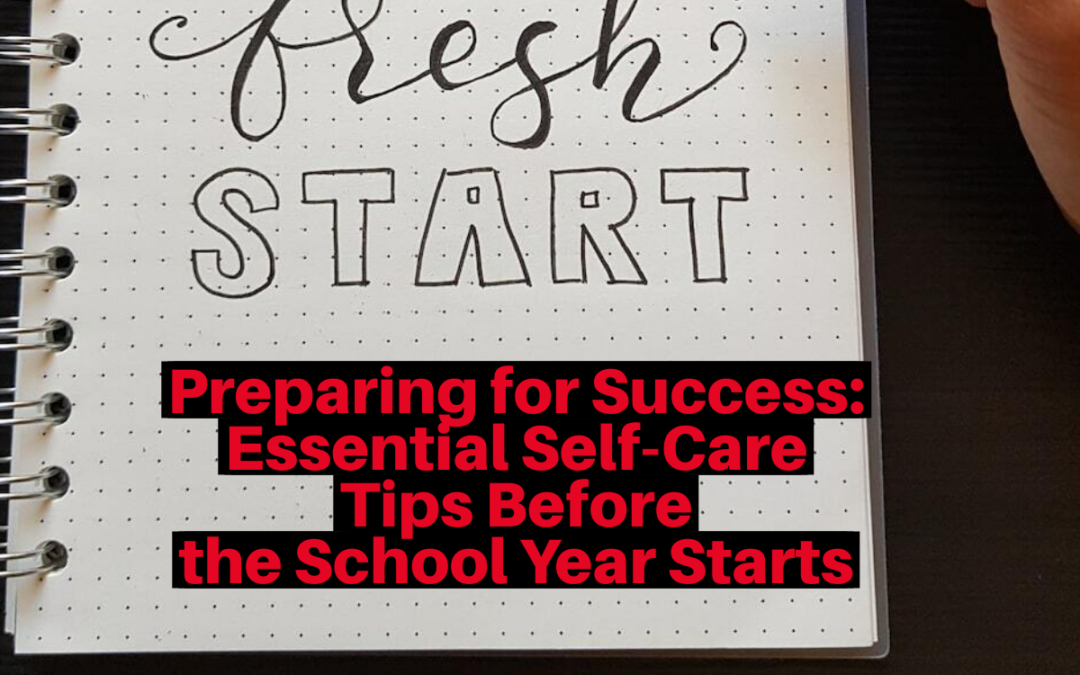
by bitsofthewilliams | Jul 18, 2023 | BACK TO SCHOOL EDITION
As the new school year approaches, it’s important to take a moment to focus on self-care. Setting aside time to prioritize your well-being before the hustle and bustle of classes, assignments, and extracurricular activities begin can make a significant difference in your overall success and happiness. In this blog post, we will explore some valuable self-care tips to help you start the school year on the right foot, ensuring you are mentally, emotionally, and physically prepared for the challenges ahead.
-
Establish a Relaxing Routine:
Create a daily routine that includes moments of relaxation and rejuvenation. Set aside dedicated time for activities that bring you joy and help you unwind. Whether it’s reading a book, taking a walk in nature, practicing meditation, or engaging in a hobby, these calming rituals will help you reduce stress and maintain a positive mindset throughout the school year.
-
Prioritize Sleep:
Adequate sleep is crucial for academic performance and overall well-being. As the school year approaches, gradually adjust your sleep schedule to ensure you’re getting the recommended 7-9 hours of quality sleep each night. Create a calming bedtime routine, limit electronic device usage before bed, and create a comfortable sleep environment to promote deep and restorative rest.
-
Plan and Organize:
Start the school year with a sense of order by planning and organizing your academic and personal life. Invest in a planner or digital calendar to keep track of assignments, deadlines, and extracurricular activities. Break larger tasks into smaller, manageable steps, and schedule regular study sessions to stay on top of your coursework. By establishing an organized system, you’ll alleviate stress and feel more in control of your responsibilities.
-
Nurture Healthy Relationships:
Surround yourself with supportive and positive relationships. Prioritize spending time with friends and loved ones who uplift and motivate you. Seek out people who share your goals and values and who encourage your personal growth. Engaging in meaningful connections will provide emotional support, reduce stress, and enhance your overall well-being during the school year.
-
Practice Self-Compassion:
Be kind to yourself and practice self-compassion throughout the school year. Understand that mistakes and setbacks are a natural part of the learning process. When faced with challenges, remind yourself that it’s okay to ask for help and that your worth is not solely determined by academic achievements. Treat yourself with the same care and understanding you would offer a close friend, and remember to celebrate your accomplishments along the way.
-
Stay Active:
Regular physical activity is vital for maintaining both physical and mental well-being. Incorporate exercise into your routine before the school year begins. Whether it’s going for a run, practicing yoga, or joining a sports team, staying active will boost your energy levels, improve focus, and reduce stress. Aim for at least 30 minutes of exercise most days of the week to reap the benefits of an active lifestyle.
Preparing for the school year goes beyond organizing books and supplies. It’s essential to prioritize self-care and well-being to set yourself up for success. By implementing these self-care tips before the school year starts, you’ll foster a positive mindset, manage stress effectively, and maintain a healthy balance between academics and personal life. Remember, taking care of yourself is not selfish; it’s an investment in your overall happiness and success. Embrace self-care as an integral part of your academic journey, and watch as you thrive in the year ahead.
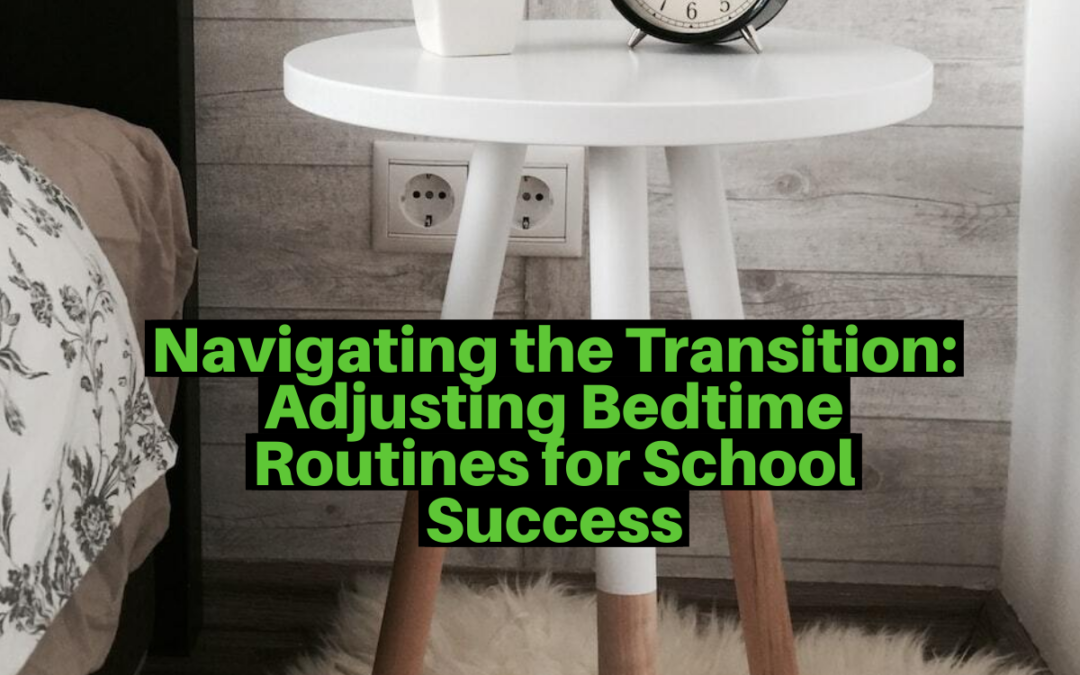
by bitsofthewilliams | Jul 18, 2023 | BACK TO SCHOOL EDITION, PARENTING
With the start of a new school year, it’s important to establish a consistent and healthy bedtime routine. A well-rested mind and body are essential for academic performance, focus, and overall well-being. However, transitioning from a relaxed summer schedule to a structured school routine can be challenging. In this blog post, we will explore practical strategies to help you and your family adjust bedtime routines smoothly, ensuring a restful night’s sleep and a successful school year.
-
Gradual Transition:
Start adjusting your bedtime gradually a week or two before the school year begins. Each night, move bedtime 15 minutes earlier until you reach the desired school bedtime. This gradual transition allows your body to adapt to the new schedule without sudden disruptions, making the adjustment process easier.
-
Consistent Sleep Schedule:
Establish a consistent sleep schedule, aiming for the recommended 7-9 hours of sleep for school-aged children and 8-10 hours for teenagers. Determine the time you need to wake up for school and work backward to determine an appropriate bedtime. Consistency helps regulate your body’s internal clock and improves the quality of sleep, ensuring you feel refreshed and alert in the morning.
-
Wind-Down Routine:
Create a wind-down routine to signal to your body that it’s time to relax and prepare for sleep. This routine should be consistent and include activities that promote relaxation. Consider incorporating calming activities such as reading a book, taking a warm bath, practicing deep breathing exercises, or listening to soft music. Avoid stimulating activities like screen time or intense physical exercise close to bedtime, as these can disrupt sleep patterns.
-
Limit Screen Time:
The blue light emitted by electronic devices can interfere with the production of melatonin, a hormone that regulates sleep. Establish a “screen curfew” by limiting electronic device usage at least an hour before bedtime. Encourage activities that do not involve screens, such as reading, journaling, or engaging in quiet conversations, to promote a more peaceful transition to sleep.
-
Create a Sleep-Friendly Environment:
Design a sleep-friendly environment that promotes relaxation and quality sleep. Keep your bedroom cool, dark, and quiet, as these conditions are conducive to optimal sleep. Consider using blackout curtains, earplugs, or a white noise machine to create a peaceful atmosphere. Invest in a comfortable mattress, pillows, and bedding to enhance sleep quality and overall comfort.
-
Avoid Caffeine and Heavy Meals:
Caffeine and heavy meals close to bedtime can interfere with sleep patterns. Limit caffeine intake, especially in the late afternoon and evening, and opt for decaffeinated beverages instead. Additionally, avoid large meals or spicy foods right before bed, as these can cause discomfort and make it harder to fall asleep.
-
Establish a Morning Routine:
A smooth transition to the school routine involves not only adjusting bedtime but also establishing a consistent morning routine. Wake up at the same time each day, allowing yourself enough time to prepare for the day ahead. Start the morning with a balanced breakfast, engage in light physical activity, and allocate time for personal hygiene and getting dressed. A structured morning routine sets a positive tone for the day and helps you feel more prepared and focused.
Adjusting bedtime routines for school is a vital step in ensuring a successful and productive academic year. By implementing these strategies, you can ease the transition from a relaxed summer schedule to a structured school routine. Remember that consistency, gradual adjustments, and creating a sleep-friendly environment are key to achieving restful nights and energized mornings. Prioritize your sleep, and watch as improved rest and well-being positively impact your school performance and overall quality of life.
